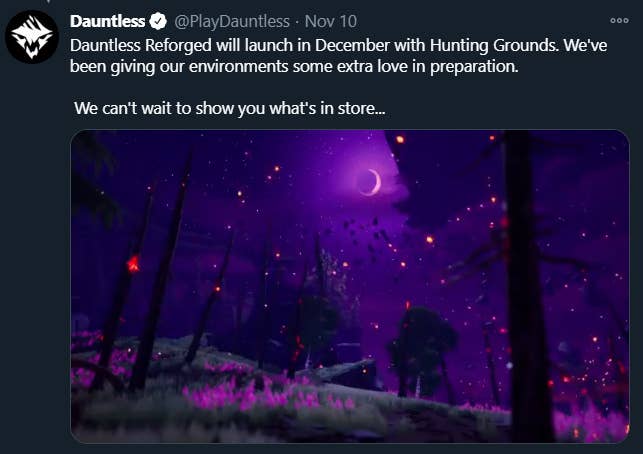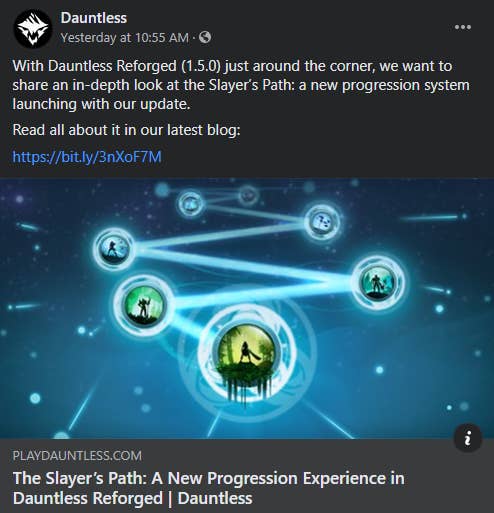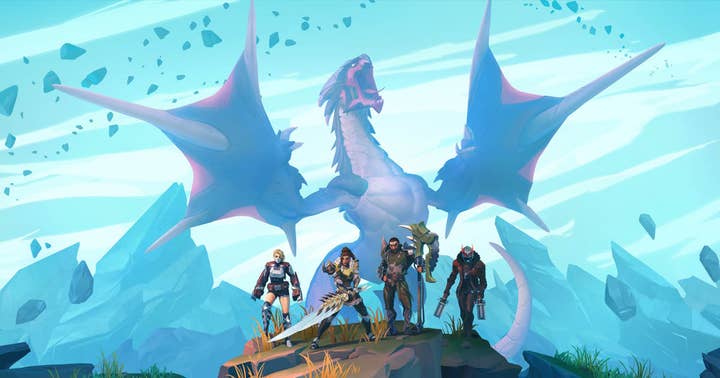How to map social media to your marketing funnel
Phoenix Labs' RuthAnne Berry talks about using social media to meet your game's goals
It's easy to say brands should be on social media. But in order to succeed on social media you must go beyond what has already been done and decide what your company wants to accomplish.
There is no one-size-fits-all approach; you have to base your strategy on your goals. Decide what your goals are and use them as a guiding light to empower your decisions, realize which stats matter to you, and iterate on what you learn.
Once you understand the goals you want to achieve and the boundaries you're comfortable with, you'll have an amazing opportunity to play in the space you've created and find what works.
Every interaction a player has with you should entice them to journey further down your marketing funnel
Your product goals will determine:
- The social media platforms you invest in
- The strategies you use on those platforms
- The stats you care about measuring
What are you trying to accomplish?
- You want people to know about your game.
- You want people to download your game.
- You want people to feel a deeper connection to your game.
These goals are all different from each other. Each one will need a different strategy and may even require different social media platforms. Deepen relationships to your product by meeting players where they are and stay top of mind by reaching them outside of your game. Every interaction a player (or potential player) has with you should entice them to journey further down your marketing funnel.
The marketing funnel
- Awareness: the player is aware of your game
- Interest: the player is interested enough to research your game
- Desire: the player has the opportunity for emotional connection
- Action: the player interacts with what you're sharing with them
- Retention: the player plays your game on an ongoing basis
Once the player reaches the retention step you have the opportunity to continue to engage them in a desire > action > retention loop.
Awareness
If your goal is to raise awareness, focus on high-level content with concise takeaways. Think of it like a billboard ad or Super Bowl commercial: incredibly visible, but with low conversion.
A viral tweet is an example of a social media post that is great at making people aware of your game. If you don't have organic virality, the best way to get guaranteed eyes on your game is through sponsored social media posts. These can be Facebook ads, sponsored tweets, Instagram posts, or even sponsored mega-influencer videos.

Interest
If your goal is to pique interest, focus on what makes your game unique. Have a deep story? Share something about it that will hook a player and make them want to learn more. Have a unique art style? Share art concepts that you experimented with. Think of interest as the subject line on the best marketing email you have ever read.
This stage of the funnel is also where you'll want to provide deeper information about the game. Even if you're not directly encouraging a player to click through to your blog or patch notes, you still will want that information to be available if they go looking.

Desire
If your goal is to increase desire, focus on highly visual posts and deeper game information.
This can look like an incredibly curated Instagram account or a company YouTube channel full of behind-the-scenes videos. This can also look like retweeting fanart, or running contests that encourage the creation of user-generated content. Anything that builds a deeper connection to your game and your brand fits well here.
The quality bar for social media posts at this level is high. Most players at the desire stage already feel an emotional connection to your game, and you want to encourage and nurture that. If you want your game to have a community that rallies around you, it's worth it to spend extra effort here.

Action
If your goal is to encourage action, you'll want to focus on both the action you want the player to take and the value that action will bring to the player.
This can look like organic Facebook or Twitter posts that offer just enough background information on a character to inspire your players to search for more, or posts that lead to that information directly: with an embedded CTA.
At this stage your main goal is to get the player off of social media and onto your website -- or into your game.

Retention
Once people truly care about your game, you can nurture a group of advocates who trust you enough to give you feedback and spread your message far and wide. One of the strongest forms of marketing is word of mouth; people will often convert based on what others say about you.
If your goal is to improve retention, focus on creating space for genuine conversations: between your developers and your community, between community members, and within your own organization.
Once people care about your game, you can nurture a group of advocates to give you feedback and spread your message far and wide
Reddit and Discord are both great spaces for this kind of connection, but you may also find success in your community's Twitch chat.
If your goal is retention, focus on the desire > action > retention loop. Once a person becomes a player, you can always deepen their connection and encourage them to participate, whether that's through a community event or an engaging sale.
Once you understand your goals, they become the guideposts you use to mark what matters to your social media strategy -- and what does not.
Your brand is on social media and your strategy is being executed. Now you must assess and iterate on what works.
Measure what matters
Key Performance Indicators (KPIs) are numbers that help you measure your performance.
There are tons of analytics available to you on every social media platform. There are stats that seem to signal success but are really distractions, and there are stats that are buried in your analytics that can be incredibly valuable.

Three things to keep in mind when looking at social media stats:
- Follower count can be a symptom of success, but it is not a guarantee of it.
- Follower count that is artificially inflated does harm to your brand.
Your content only matters if it matters to your audience.
- Impressions matter if your goal is awareness.
- Engagements are a significantly better indicator of interest than impressions.
Your calls to action are only useful if people take action on them.
- Link clickthrough is incredibly important at the action stage.
- Link clickthrough data is provided on most social media platforms, including per-post clickthrough.
- You can also look at where traffic is coming from in Google Analytics. This can help you build a more well-rounded picture of which social media platforms are driving people to your website.
Decide which KPIs matter to you based on your goals on each platform, and work to improve those stats over time.
Social media guidelines
- Be deliberate
Don't make the mistake of starting accounts on ten social media platforms only to let them die from lack of resources. Instead, look at where your goals fall on the marketing funnel, choose platforms that are suited to those goals, and make sure you have the time and effort to invest in them.
Don't make the mistake of starting accounts on ten social media platforms only to let them die from lack of resources
- Understand your target audience
Knowing who you're not appealing to is just as important as getting in front of the right folks and will help you decide which social media platform to invest in.
- Experiment (within reason)
Create a strategy, but realize that it's not law. Make a plan, but also allow yourself the room to see what works.
A great way to challenge your assumptions on social media is to run A/B tests on your brand channels.
For example:
- Craft two social media posts with similar copy that end with a call to action.
- Post them X weeks apart, one with an image attached and one without.
- Measure the reach, engagements, and clickthrough on each post.
- A rising tide lifts all boats
Clickthrough may be lower than you expect on social media, but clickthrough isn't the whole story. Look at your product health holistically; social media tends to lift the success of other marketing and organic search.
- Embrace your constraints
Understand your constraints (art, copy, etc.) and play within them. You know how they say competition fosters innovation? So do constraints. Challenge yourself to do more with what you have.
To conclude, here's your checklist for success on social media:
- Have a social strategy that spans all of your social media accounts.
- Have fun and don't take things too seriously, while still being professional.
- Have an agreed-upon way to measure progress toward your goals.
- Know what your voice sounds like outside of your game.
- Frequently create new, aspirational goals that challenge you to improve on your baseline.
After volunteering in the streaming space for years, RuthAnne Berry started her career in games as a social media manager at ESL, focusing on its Counter-Strike: Global Offensive, Street Fighter, and Playerunknown's Battlegrounds accounts. She soon took on multiple contracts including Beyondthesummit, IEM and ESEA. Since 2018 she has been at Phoenix Labs working on the studio's debut title, Dauntless. You can reach out to her at raberry@phxlabs.ca or on social media at @bunheadwhat.








